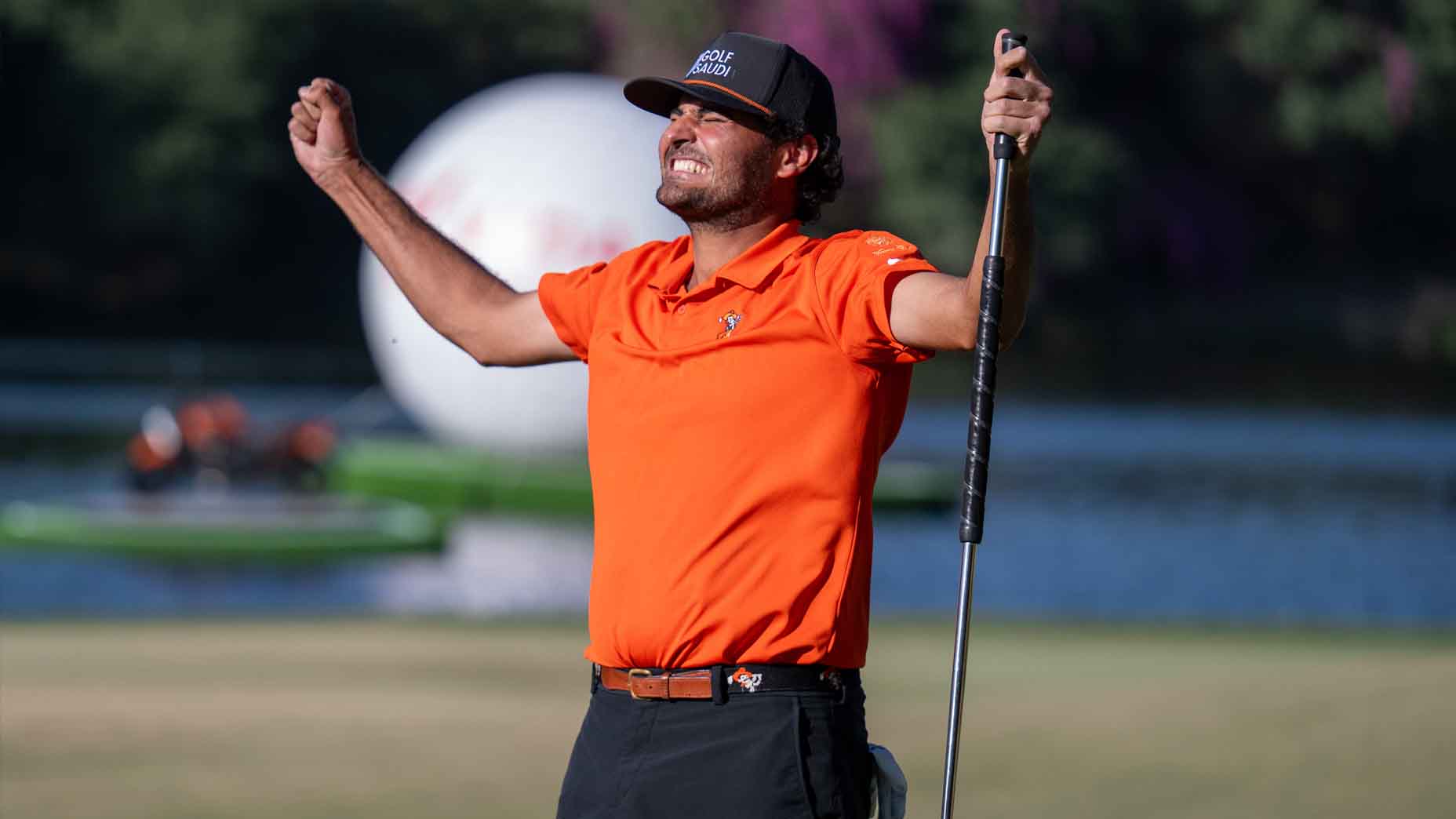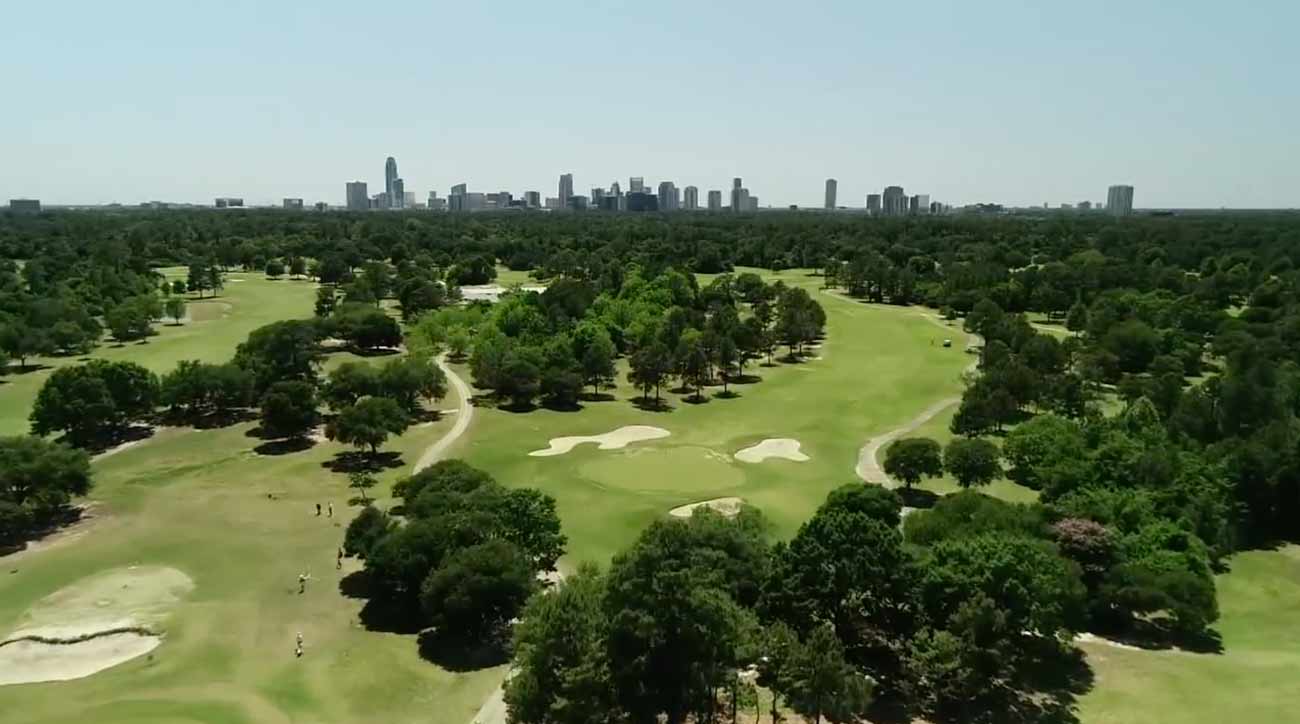Winners and Losers from the PGA Tour’s reimagined schedule
- Share on Facebook
- Share on Twitter
- Share by Email

Jon Rahm, Joel Dahmen and Harry Higgs at the WM Phoenix Open, Jordan Spieth at the Travelers Championship, Jay Monahan and Keith Pelley (clockwise from top left).
Getty Images
On Tuesday morning, Golfweek’s Eamon Lynch broke the news that the PGA Tour has decided on this year’s four elevated events. While the Tour hasn’t yet commented, it seems safe to assume that this is, indeed, happening: The best PGA Tour players will all tee it up at the same 17 events. We already knew what the first 13 events would be: the four majors (Masters, PGA, U.S. Open, Open Championship), the Players, the three invitationals (Genesis, Bay Hill, Memorial), the previously announced elevated events (Sentry Tournament of Champions, WGC-Match Play) and three playoff events (FedEx St. Jude, BMW, Tour Championship). Now, per Golfweek’s reporting, we know the four additional elevated events: the WM Phoenix Open, the RBC Heritage, the Wells Fargo and the Travelers.
What does this mean for those events — and for the rest of the schedule? It means, for the second day in a row, we’re breaking things down, Winners/Losers style. Let’s get to it:
WINNER: SUPER BOWL WEEKEND
The WM Phoenix Open has been a behemoth of a frat party for decades. The 2023 edition was always going to be even more behemoth-y, given the Super Bowl is coming to the same city the same week. Now that it’s going to be an elevated event? Yowza. TPC Scottsdale’s about to be a tough ticket — never mind State Farm Stadium.
LOSER: CANADA
After an invigorating edition of the RBC Canadian Open this summer, there was plenty of positive chatter about the national open hosted by our brothers and sisters to the north. This year? Yikes. The Tour’s trek to Canada comes the week after the Memorial and the week before a back-to-back duo of the U.S. Open and Travelers Championship, both elevated events. Something’s gotta give, and this year that something is a trip to Oakdale Golf and Country Club.
But don’t fret, Canada. There will be a brighter 2024. The Presidents Cup is coming to Montreal, after all. And RBC is sponsoring the Tour’s elevated event at Hilton Head in 2023 — could it take that money north of the border in 2024…?
WINNER: QUAIL HOLLOW, AGAIN
That’s right, folks: it is, once again, QUAIL HOLLOW SZN. The Wells Fargo Championship has made it a mainstay on the PGA Tour schedule, but pro golf’s decision-makers seem eager to press the Quail Hollow button at every possible opportunity. The 2017 PGA Championship was the club’s first major, this year’s Presidents Cup brought another big-time event to the club and the PGA is returning in 2025. Now they’ll host an elevated event, too, a nod to the golf-hungry (and sponsor-friendly) market in Charlotte. The people turned out for the Presidents Cup. I’m sure they’ll come out to see the Tour’s best and brightest, too.
LOSER: TEXAS
The Lone Star State isn’t getting shut out of the elevated events; the WGC-Match Play in Austin remains one of the most fun tournaments on the calendar. But the rest of its events are in a bit of a pickle. The Houston Open’s future is uncertain after this fall. The Valero Texas Open sits the week before the Masters-RBC back-to-back stretch. And playing both DFW-area events in the spring (Byron Nelson and Colonial) would require playing five events in a row (and seven of eight, including the U.S. Open-Travelers stretch). Jordan Spieth contemplated that dilemma on Tuesday:
“You know, if that’s the case, then that does put me and a few other people like Scottie, Zalatoris, some guys who like playing both the Dallas events in a situation where you’re looking at five in a row, which I’ve done once. I don’t particularly like doing more than four in a row, but I love my hometown events.”
WINNER: FANS
It’s fun to pick through the minutiae, and there obviously is some collateral damage, but big-picture this is a really positive development for PGA Tour fans. Finally we have some clarity around which events *really* matter and we know when all the biggest names are going to show up. That’s a net gain; the big events will feel bigger, the fall “offseason” will get us revved up for the start of the next year and we’ll have a healthier balance of big-time golf in our lives. There will still be golf, like, every week, but it’ll be easier to make sense of it all.
LOSER: POST-MAJOR WEEKS
I’ll be clear on this one: I hate the idea of having elevated events the week after a major. Hate it. If I was in charge, the Tour wouldn’t have any PGA Tour events the week after a major, much less an elevated event where you get the exact same group of fellas together. But this year we’ll do that twice, first from the Masters to the RBC Heritage (which at least makes geographic sense) and then from the U.S. Open in Los Angeles to the Travelers in Connecticut (which makes less geographic sense).
Blergh. Let the gravity of what you’ve just done at the majors soak in! Every other sport builds up to its biggest competitions and then takes a break immediately thereafter. You’re not likely to see NFL teams suiting up the week after the Super Bowl, after all. I’d much prefer if there was a way to work in the elevated events the week before majors, to serve as a sort of tune-up. Otherwise we’re just resigning ourselves to weeks of anti-climax and this feels more like sponsor service than the best possible schedule for the Tour.
WINNER: MOST U.S. GOLF STATES
Look, not every event can be elevated. If they all were, none of ’em would be. With that in mind, the Tour deserves credit for doing a relatively effective job of spreading the love. The 16 U.S. events will be staged across 13 states, and those hosting two events (California, Florida and Georgia) make plenty of sense.
The Northeast gets the PGA plus an elevated Travelers. The Midwest gets the Memorial plus the BMW at Olympia Fields. The Southeast has the best setup, with Bay Hill, the Players, the Masters, the RBC and the Wells Fargo all reasonable driving distance from PGA Tour HQ in Ponte Vedra Beach, Fla. Texas has the Match Play, Arizona gets the Waste Management and southern California gets both the Genesis and the U.S. Open. Even Hawaii gets some love! All that leaves is…
LOSER: THE PACIFIC NORTHWEST
Here in Seattle, my closest elevated event will be in [scans map] Los Angeles! It’s not just me, either — the entire Wild West feels notably absent from the Tour’s current plans. A quick scan of that same map reveals the uncomfy reality that no elevated event will be held both north and west of noted Pacific Northwest metropolis Memphis, Tenn.
Look, I get it. There’s a lot of open space in the upper left quadrant of the United States, the population isn’t as golf-obsessed and the corporate sponsors may be tougher to come by as a result. But let’s work on this, PGA Tour — and remedy by moving the Match Play to Chambers Bay ASAP.
WINNER: WHOEVER WINS, ANY WEEK
To some extent, the elevated events will clarify the divide that already exists between the top tier of PGA Tour players and the guys that, y’know, also technically have their cards. But in the new setup both groups actually stand to benefit. Top pros will play roughly the same number of tournaments but make significantly more money via elevated purses. Lesser pros, meanwhile, will face slightly lighter competition in the rest of the Tour’s events but still play for million-dollar first-place checks, Masters berths and immediate entry into the cool-kids club of elevated events.
LOSER: THE STRATEGIC ALLIANCE (FOR NOW)
Here’s hoping a sizable contingent still shows up to play the Genesis Scottish Open this coming year despite its lack of elevated status. And here’s hoping the Tour allows its cross-tour members (like Jon Rahm or Rory McIlroy) to count their DP World Tour starts towards their required three “non-elevated” starts on the PGA Tour. That would seem like an easy and logical nod to the Tour’s strategic partners across the pond. For now, though, the Euro Tour doesn’t seem overly present in the Tour’s immediate plans.
But I think “for now” is an important caveat here. Rory McIlroy seems to be calling plenty of shots these days, so it’s worth looking back at what he told Sky Sports’ Jamie Weir in early September:
“I think the 2023 golf calendar will look pretty similar to what it’s looked like this year. But if people can just remember that 2023 can be a bridge to ’24. I think ’24 is when you’re really going to see the benefits of the strategic alliance, you’re going to see the best players get together way more often, the best players get together in this region more often, and I think that’s ultimately great for the wider game … I think the DP World Tour unlocks that global aspect for the PGA Tour where they’ve been lacking, and they would say that themselves.”
Thought this was very interesting from Rory today, for any fans concerned the DP World Tour is becoming too subservient to the PGA Tour or being weakened by the ‘strategic alliance’ pic.twitter.com/5DGW9o3e3p
— Jamie Weir (@jamiecweir) September 7, 2022
WINNER: OPTIMISM
The word on the elevated events is that they’re going to rotate from year to year. That means hope springs eternal as the Tour plans to spread the love around a little bit. So where are we headed in 2024…?
The author (cautiously) welcomes your comments at dylan_dethier@golf.com.
Latest In News

Dylan Dethier
Golf.com Editor
Dylan Dethier is a senior writer for GOLF Magazine/GOLF.com. The Williamstown, Mass. native joined GOLF in 2017 after two years scuffling on the mini-tours. Dethier is a graduate of Williams College, where he majored in English, and he’s the author of 18 in America, which details the year he spent as an 18-year-old living from his car and playing a round of golf in every state.









